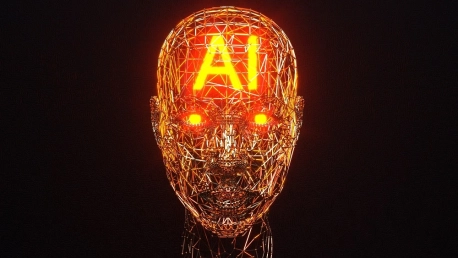The realm of Artificial Intelligence (AI) presents a landscape ripe with potential, powering a shift in everything from business operations to creative endeavors. This swift march of progress, however, is also sowing seeds for unprecedented challenges within societal frameworks. As AI weaves itself ever more intricately into the fabric of different sectors, there emerges an urgent need to sculpt a regulatory environment that is both protective and permissive, ensuring innovation can thrive while safeguarding against the downside risks. Addressing this delicate balance requires a discerning eye that understands AI’s wide-ranging implications and a resolve to impose measures that are as fluid and adaptable as the technology they intend to govern.
Understanding AI’s Dual Nature
The Ambiguous Implications of AI
Artificial Intelligence stands at the crossroads of progress, capable of driving humanity towards an era of unparalleled efficiency and innovation, but also posing unique threats that could disrupt social order. The essence of AI lies not in an inherent good or evil, but in its application; the algorithms that optimize energy usage in a smart city can also drive a surveillance state. This dual nature of AI injects a poignant complexity into discussions around its regulation, demonstrating that governance must pivot on the axis of context, discerning the shades of grey rather than the black and white.
The Need for Nuanced Regulation
The European Union has pioneered a step in the direction of nuance by categorizing AI applications according to their risk levels — a testament to the understanding that the impact of AI is largely dependent on its use-case. Embracing such a model highlights the inadequacy of blanket policies that fail to recognize the multifaceted roles AI can play. Tailoring regulation to the risk profile of each AI application underscores the commitment to mitigating specific harms while enabling the beneficial uses of AI to flourish.
Core Principles for AI Regulation
Traceability of AI Systems
Traceability in the context of AI systems becomes a cornerstone for credible governance. When decisions that affect human lives—like loan approvals or medical diagnoses—are outsourced to algorithms, establishing an auditable trail becomes paramount. This level of transparency ensures that AI-driven decisions are not ‘black boxes’ but processes subjected to scrutiny and comprehension. Such a system works to instill trust and can clarify the reasoning behind decisions that may significantly impact individuals or groups.
Ensuring Continuous Testability
Given AI’s propensity for learning and evolving, static assessments fall short. Rigor in AI regulation necessitates continuous testability, where feedback loops inform ongoing revisions. This aligns oversight with AI’s dynamic nature, catching biases that might creep in unnoticed or emergent behaviors that deviate from initial programming. It’s not merely about setting the bar; it’s about ensuring it continues to be met.
Defining Clear Liability
With great power comes great responsibility—and AI wields considerable power. As such, clear parameters of liability when things go awry are essential. Where misuse of AI results in harm, the imposition of staunch penalties acts as a deterrent, compelling companies to prioritize ethical implications alongside technical advancements. This not only underscores the gravity of ethical AI practices but also signals an uncompromising stance against negligence and abuse.
Overcoming Regulatory Challenges
The Black-Box Dilemma
AI, often resembling a black box, clouds visibility into how decisions are made, which poses a significant challenge for preemptive regulation. Tackling this opacity means constructing a framework capable of adaptive oversight, one that can respond to AI’s continuous adaptations and varied applications. Such a system would not only need to manage current realities but also to foresee potential future complexities.
Failure Management and Consumer Rights
AI systems are not infallible, rendering failure management mechanisms essential—a domain where consumer rights merit particular focus. We must ensure that redressal options are hardwired into these systems, much as they are in traditional consumer interactions. If an AI system falters, pathways akin to returns, refunds, or repairs in the non-AI world should be accessible to the impacted parties. Maintaining this continuity of consumer rights in the face of technological advancement is pivotal.
Building an Adaptive Regulatory Framework
The Importance of Evolving Policies
A static regulatory framework is ill-suited for the ceaselessly progressing field of AI. Only through adaptability can policies remain relevant amid the swift current of AI development. Reflecting this flexibility not only means reshaping regulations over time but also fostering a regulatory ecosystem that is anticipatory and responsive. The tenets of AI governance must evolve in tandem with the technology to offer steadfast safeguards against potential pitfalls.
Beyond Just the Algorithms
Regulating AI can’t stop at the algorithm—it must encompass the ecosystem in which these algorithms operate, including the quality of input data and the transparency of the processes they utilize. Poor data quality can reinforce biases, and opaqueness in algorithms can obstruct accountability. A well-rounded approach considers these factors hand-in-hand with the algorithms themselves, building a foundation for comprehensive and effective regulation.
A Unified Global Approach to AI Regulation
Harmonizing International Efforts
When it comes to AI regulation, international harmony yields undeniable advantages. A singular framework across borders would prevent conflicting standards, reduce uncertainty for developers, and facilitate global innovation. However, achieving this synchronization is an arduous task that demands collaboration and compromise in the face of varied legal, cultural, and ethical perspectives.
Outcome-Oriented Regulation
The paradigm of regulating based on outcomes, akin to the way society governs the use of knives, largely circumvents the issues inherent in a focus solely on the tool. An outcome-oriented regulation underscores accountability for AI’s impacts, realigning the emphasis towards the effects of usage rather than the presence of the technology alone. This shift foregrounds the practical implications of AI and allows for more direct redressal of problems that may arise.
Revisiting ‘Safe Harbor’ Protections
Historically, ‘safe harbor’ provisions have shielded technology providers from certain liabilities, fostering innovation. However, these protections require reevaluation in the landscape of AI. The dynamic pace and potent capabilities of AI necessitate a proactive stance: Safe harbor must not be a loophole for irresponsible deployment. Instead, it should balance innovation with accountability, providing a safety net that enables progress but demands corrective action when misuse is uncovered.
Establishing Financial Robustness in Penalties
The Cost of Non-Compliance
In the realm of AI, penalties for non-compliance must hit where it hurts: the bottom line. It’s crucial for the financial deterrents to be substantial—mere slaps on the wrist will inadequately motivate companies to adhere to ethical principles. To be effective, regulations need to be economically poignant, transmuting penalties from routine business expenses into significant encumbrances that incentivize compliance and responsible AI use.
Treating Penalties Beyond Business Expenses
The field of Artificial Intelligence (AI) is blossoming with potential, heralding transformative changes across multiple industries and creative fields. This rapid advancement brings with it unique challenges that test the strength and adaptability of our societal structures. As AI becomes more entwined in various sectors, the pressing necessity for a balanced regulatory framework becomes clear. Such a framework must foster innovation by being permissive, yet it also has to provide protection to mitigate potential negative impacts. To strike the right balance, regulators must possess a nuanced understanding of AI’s far-reaching consequences and be willing to create flexible and responsive rules that can keep pace with the evolving nature of AI technology. The goal is to cultivate an environment where AI can flourish unimpeded, while still placing checks where they are needed to ensure the technology operates within the bounds of our ethical and societal standards.









